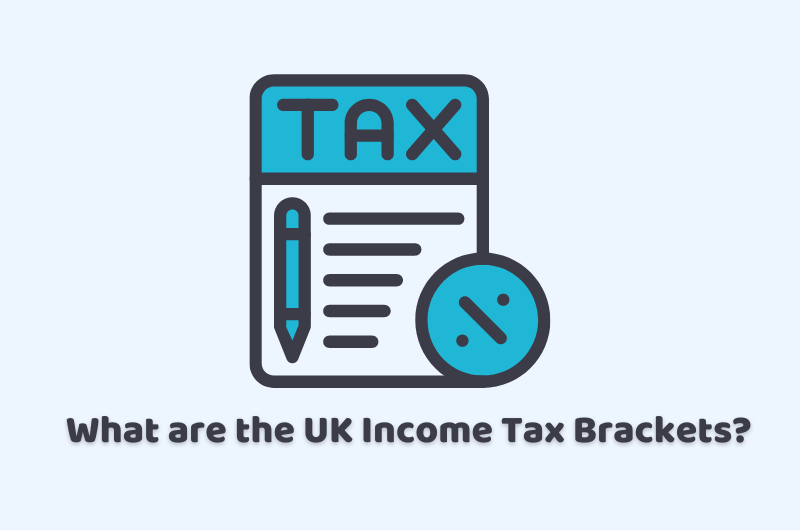
04/07/2023tax , Tax Issues , Tax News and Tips , Tax Saving Tips , Taxation
If you are residing in the UK, you must be aware of the importance related to being conscious of the direct tax rates and principal tax allowances and the new changes updated in the tax year 2023-2024. This was normally mentioned in the new Spring Budget that was published in the month of March, the tax year 2023. It has provided information on the requirements of the government and what is the general tax position for the tax cases which are straightforward. This comprehensive guide is based on the frequently asked questions about tax brackets in the UK. Lets us get started to gather further information.
Talk to one of our intelligent and clever professionals to get your further queries about tax brackets in the UK. We will ensure to come up with the best possible solution.
What are the Three Rates on Which Income Tax is Charged?
The three rates on which income tax is charged in the UK are the basic rate, the higher rate, and the additional rate. The basic rate of income tax in the UK is currently 20% and applies to taxable income up to £50,270 for the tax year 2023/24. The higher rate of income tax is currently 40% and applies to taxable income between £50,271 and £150,000.
The additional rate of income tax is currently 45% and applies to taxable income above £150,000. However, these rates have a tendency to slightly change in every tax year. So the best practice is to keep the awareness of tax rates updated when a new tax year begins.
What is the Basic Tax Rate of Personal Allowance?
The personal allowance is the amount of income you can earn before you start paying income tax. For the tax year 2023/24, the personal allowance is £12,570. This means that you can earn up to £12,570 before you start paying income tax. The basic rate of income tax in the UK is currently 20%, which applies to taxable income between £12,571 and £50,270.
Normally the amount of personal allowance is tax-free as many of you might already receive and be aware of the related facts. However, once you start to earn more than a certain tax-free amount, the basic rate of tax will be applied to the income.
What are the Basic Tax Rate for Marriage Allowance?
Marriage Allowance is a tax relief in the UK that allows a person to transfer 10% of their personal allowance to their spouse or civil partner. This can reduce the amount of income tax the recipient has to pay. The person transferring the allowance must earn less than their personal allowance, and the recipient must be a basic rate taxpayer.
The tax rate on Marriage Allowance is 0%, as it is a tax relief that reduces the amount of income tax you have to pay. This will help several people to take the benefit of the reduced tax bills.
What are the Tax Rates of National Insurance Contributions?
National Insurance Contributions (NICs) are payments made by employees, employers, and the self-employed in the UK to fund state benefits such as the State Pension and the National Health Service (NHS). The amount of NICs you pay depends on your earnings and whether you are employed or self-employed.
For the tax year 2023/24, the rate of NICs for employees is 12% on earnings between £9,568 and £50,270, and 2% on earnings over £50,270. For the self-employed, the rate of NICs is 9% on profits between £9,568 and £50,270, and 2% on profits over £50,270. Employers also pay NICs on their employees’ earnings, with the rate varying depending on the employee’s earnings and employment status.
The Bottom Line
Now that you have gathered a fair amount of information about what are the tax brackets in the UK, we can bring the discussion towards wrapping up. As mentioned in the discussion earlier that the tax brackets have a tendency to slight changes in every new tax year. So in order to be ensured that you are paying the right amount of tax in the next tax year, updated awareness about rates is imperative.
This will keep you away from paying too much tax amount. This will also help to maintain a balance in the tax payments and you will not have to suffer from any kind of penalties or fines charged by HMRC for not paying the tax on time. We hope these few minutes of reading will help you to develop a better understanding about what are the tax brackets in the UK and how can it work for your benefits in a better way.
If you seek professional help to learn more about the tax brackets in the UK, why wander somewhere else when you have our young and clever team of professionals at CruseBurke?
Disclaimer: All the information provided in this article on tax brackets in the UK includes all the texts and graphics. It does not intend to disregard any of the professional advice.

